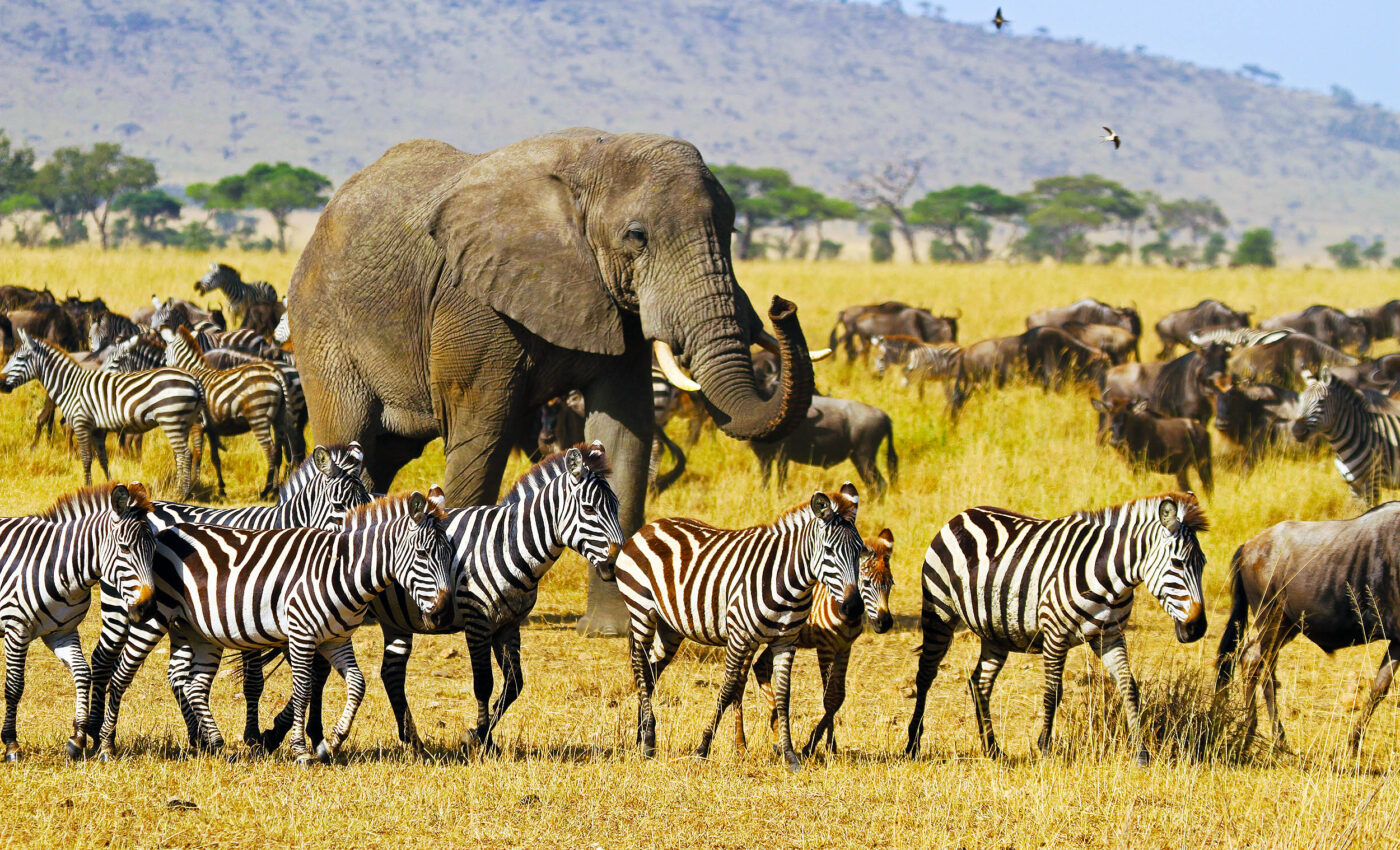
Driving force discovered behind mass migration of large grazing animals
The Great Migration is a remarkable phenomenon that takes place each year in the Serengeti National Park and involves more than two million animals.
Zebras, wildebeest, and gazelle follow the same migratory routes, one after another, in a body-size dependent way. This “grazing succession” has long puzzled scientists, especially considering that the animals are sharing limited food resources.
Grazing succession
A recent study led by Michael Anderson of Wake Forest University has shed light on the intricate dynamics that govern this grazing succession, revealing a complex interplay of competition and facilitation at work.
During this migratory journey, animals of varying body sizes follow one another in a specific order due to differences in their grazing habits and the impact on the vegetation.
The Serengeti’s zebra, weighing approximately 230 kilograms, lead the migration, followed by the wildebeest at about 180 kilograms, and finally, the much smaller gazelle, weighing around 20 kilograms.
This sequential movement has intrigued researchers, leading to the question: Why do these species, competing for limited food resources, migrate in such a harmonized manner?
“Disentangling the potential mechanisms that drive the movement patterns, arrival times, and foraging behaviors of the three migrating species has been hampered by a lack of long-term, detailed data at the appropriate scale,” said the researchers.
Animal migration patterns
To investigate, the team used a variety of modern research tools including an 8-year camera-trap survey, GPS-collared animal tracking, and fecal DNA metabarcoding.
This innovative approach allowed the team to analyze the timing, arrival, and interactions among the zebra, wildebeest, and gazelle with unprecedented detail.
The findings offer a new perspective on the drivers behind the migratory patterns of these herbivores.
The research highlights a delicate balance between competitive and facilitative interactions among the species. Zebras, it appears, are pushed ahead in the migration by competition for food resources with wildebeest.
As the dominant grazers, wildebeest play a central role in this ecosystem, shaping the environment in a way that both challenges and benefits their fellow migrants.
By grazing, wildebeest reduce grass biomass, which in turn stimulates the growth of new vegetation. This newer growth is then ideally suited for the trailing gazelle, who specialize in capitalizing on such opportunities.
Push-and-pull dynamic of grazing succession
This “push-and-pull” dynamic, as the researchers describe, underscores the complexity of ecological interactions and the role of facilitation in maintaining the balance of ecosystems.
Interestingly, the study found no evidence that predation influences the order of grazing succession, a factor that has been considered in previous theories.
Furthermore, the team observed that external factors like wildfires and rainfall have a significant impact on successional grazing patterns.
Intense wildfires and periods of rainfall were found to strengthen the observed patterns, suggesting that environmental conditions play a crucial role in shaping the migratory behaviors of these species.
“Our results highlight a balance between facilitative and competitive forces,” said the researchers, emphasizing the nuanced relationship between the species and their environment.
The study not only deepens our understanding of migration and grazing patterns in the Serengeti and illustrates the importance of long-term, detailed data in unraveling the complex mechanisms that govern natural ecosystems.
“Multiple lines of evidence point to a ‘push-and-pull’ dynamic in which wildebeest, the dominant grazer, push zebra ahead by reducing grass biomass while pulling along gazelle through facilitation,” wrote the study authors.
“Our study helps to reconcile decades of conflicting results by demonstrating that competition and facilitation operate concurrently during animal migration with effect sizes that depend on resource availability.”
A new chapter for the Serengeti
In summary, this important research by Wake Forest University challenges the conventional wisdom of harmonious interspecies relationships with compelling evidence of competition.
By utilizing an extensive array of data collection methods, the team has unveiled the complex interplay between wildebeests and zebras, fundamentally altering our perception of ecological interactions and migration patterns.
Their findings illuminate the intricacies of animal behavior in one of the world’s most iconic ecosystems and offer invaluable insights for global conservation efforts and ecosystem management in the face of changing environmental conditions.
This research underscores the importance of interdisciplinary collaboration in uncovering the truths of nature, marking a significant advancement in our quest to comprehend and preserve the natural world.
The research is published in the journal Science.
—–
Like what you read? Subscribe to our newsletter for engaging articles, exclusive content, and the latest updates.
—–
Check us out on EarthSnap, a free app brought to you by Eric Ralls and Earth.com.
—–













